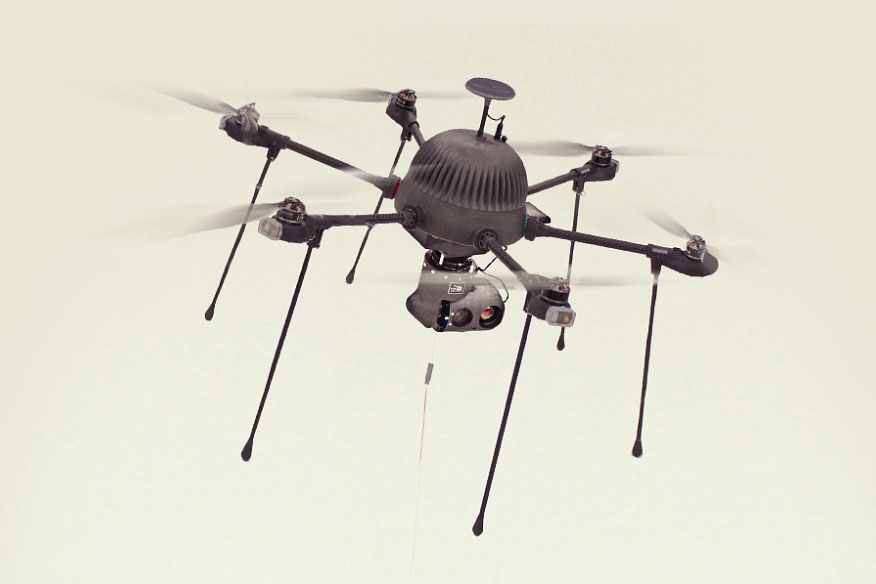WASHINGTON—Drones aren’t on their way – they’re already here. But they’re not technically legal, at least not where commercial and hobbyist use are concerned. So what exactly are people hoping to do with them, and how is the government planning to regulate it?
This past February, the Federal Aviation Administration released a set of proposed rules to govern the commercial use of small unmanned aircraft systems under 55 pounds, and then opened a 60-day commentary period. That has expired, but the FAA never set a date for a final version, and experts say the waiting game could last two years, possibly longer.
Meanwhile, unmanned aircraft system technology is advancing at a rapid pace, a fact not lost on Robert Pappas, whose team coordinates Unmanned Vehicle policy for the FAA. He said his office is trying to work with various government agencies and the private sector to ensure drones are used safely, both now and once a final set of rules are released.
The agency’s current priorities, Pappas said, are improving safety requirements and streamlining certifications and exemptions. Not at the top of the list: preventing the tiny unmanned vehicles from being used for illicit surveillance purposes – or even as part of a terrorist attack.
And that’s surprising, considering recent incidents. In the early hours of January 26, an employee of the National Geospatial-Intelligence Agency crashed an illegal drone onto the White House lawn, completely undetected by radar. What that drone could have done – or carried with it – is something best left to the imagination.
“We’ve seen a rise in UAS operations in the national air space over the last few years,” Pappas said, referencing an existing exemption process which helps the private sector “pursue some potential relief” from the current ban. Pappas grants exemptions to the existing “no commercial use rule” on a case-by-case basis, governed by Section 333 of the FAA Modernization and Reform Act of 2012.
Speaking at a discussion on civil drone policy sponsored by the Center for Strategic & International Studies in late April, Pappas said that Section 333 demand remains consistently and “remarkably high.”
Pappas said his division has issued close to 250 exemptions in the last seven months alone, and is “now issuing dozens on a weekly basis,” many of them to commercial entities so that they can use UASs for aerial photography, survey and film production.
According to Pappas, the UAS Integration Office is working internationally to develop standards, approaches and frameworks for commercial guidance in light of recent technological advances. “We continue to see new and novel applications” for drone use, Pappas said, including survey and photo capabilities in the real estate and property management sectors. He said he has received exemption requests for aircraft with unusual power sources and rotors, as well as for nighttime operations, which the proposed framework excludes for safety reasons. Permission to operate outside line-of-sight constraints, which currently require that operators maintain visual contact with their drones at all times, is also a frequent request, he said.
In theory, the potential capabilities of drones are infinite, a point made by Brian Wynne, CEO of the Association for Unmanned Vehicle Systems International, at the CSIS panel. “There are going to be as many devices as you can imagine missions going forward,” he said.
And the FAA’s response to date has been all about flexibility. In a press release timed with the release of the proposed rules, FAA administrator Michael Huerta said, “We have tried to be flexible in writing these rules. We want to maintain today’s outstanding level of aviation safety without placing an undue regulatory burden on an emerging industry.”
Drone advocate Patrick Egan, who helps manage an international organization dedicated to capturing news related to UASs, said that “flexible” doesn’t begin to describe the FAA’s proposed framework and approach. He offered a better word for it: “liberal,” as in accommodating.
Egan, a former consultant with the Space and Missile Defense Command Battle Lab where he worked on future warfare research projects said he was initially surprised by how generous the proposed rules were – even if they aren’t yet final. And from what he’s heard, the drone community feels the same way.
“As a community, we got a gift,” Egan said. “[These rules are] way, way more progressive than we could have really hoped for.” Egan said that in his opinion, the FAA may have even been more generous than they should have, in terms of not instituting formal licensing requirements and granting a weight limit as large as 55 pounds.






